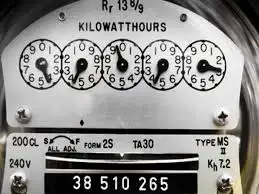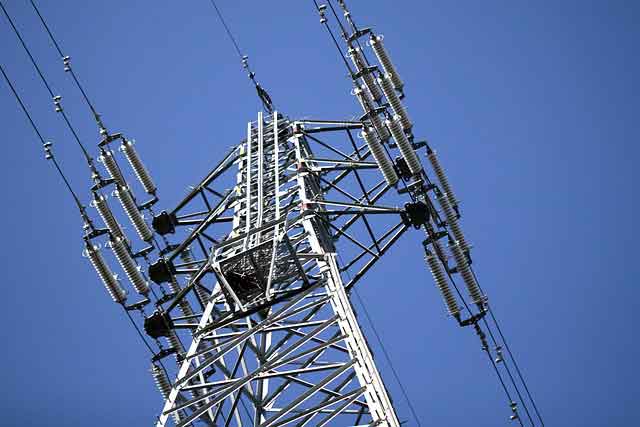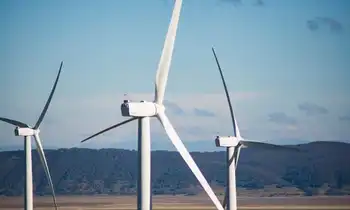Charged up over high-tech power distribution systems
By CBC News
CSA Z462 Arc Flash Training - Electrical Safety Essentials
Our customized live online or in‑person group training can be delivered to your staff at your location.

- Live Online
- 6 hours Instructor-led
- Group Training Available
One element that might not have caught many people's attention is provision for a smart grid — a modernized electrical distribution system designed to support electric cars and co-generation projects and make electricity supply more reliable.
But Canadians will probably be a lot more familiar with the smart grid within a few years. Ontario's Hydro One was already moving that way before the provincial government's February 23 announcement, and a few other Canadian power utilities are taking first steps.
Consulting firm Deloitte put the smart grid at the very top of its annual list of technology, media and telecommunications predictions this year. "Governments, utilities, enterprises and consumers are likely to spend heavily on SmartGrid in 2009," Deloitte said.
The Ontario government initiative proves the point, according to Duncan Stewart, Deloitte Canada's director of research for technology, media and telecommunications, life sciences and green technology. "This is truly a technology whose time has come," Stewart said. He made the comments at a fortuitously timed breakfast seminar on smart-grid technology co-sponsored by Deloitte and law firm Ogilvy Renault at Toronto's MaRS Discovery District the morning after the government announced its plan.
Today's power grids are engineering marvels in terms of the mesh of cabling that connects power plants to cities, homes and businesses. But the supporting machinery that balances the load and pinpoints problems is relatively primitive. Making the grid "smart" means adding high-tech gear to help monitor and regulate the load on the grid.
"Real-time monitoring and automation can be used to increase the grid's 'self-healing' capability," according to HydroOttawa's website.
"Two-way communication systems can enable the grid to respond automatically to changes in demand and even allow smart appliances in customers' homes to respond to price signals."
The utility goes on to say that, "by adding automated two-way communication systems, utilities will be able to locate problems that cause power outages remotely, analyze corrective action recommendations and significantly reduce restoration times. Smart grid technology also provides customers with new ways to conserve energy, with in-home devices that provide continuous information about price and consumption and help customers manage household appliances and equipment."
Canada is in the vanguard of smart-grid technology in some respects, though not necessarily in implementation. This country punches above its weight when it comes to companies developing technology for the smart grid, Stewart says. He attributes that to geography: because much of Canada's hydroelectric power sources are in remote northern areas while most of the population lives along the southern border, Canadians have become "good at moving electrons."
So, Canada boasts technology leaders like Ruggedcom Inc., a Woodbridge, Ont., firm that builds data communications equipment that will work inside power substations, where the side effects of high voltages and power surges would knock out ordinary networking gear in minutes.
Another is Toronto-based Regen Energy Inc., which makes controllers that manage power loads within buildings.
Canadian utilities aren't as far ahead as technology suppliers, Stewart adds — probably because of our relative abundance of energy sources.
However, speakers at the Toronto seminar agreed that Ontario — along with California — ranks among North American leaders in smart-grid technology.
Leonard Gross, Hydro One's vice-president of telecommunications engineering, says his company spearheaded an effort that led Industry Canada to set aside a chunk of wireless communications spectrum for utilities to use to monitor and control their power grids. He says four other big power-transmission utilities — B.C. Hydro, AltaLink, Manitoba Hydro and Hydro-Québec — were also part of that initiative.
Spokespeople for AltaLink and Fortis Alberta, which handles power distribution, say no work on wireless control systems is under way there, but others in the initiative are moving ahead:
• Ontario plans to complete its wireless network — which will require about 200 communications towers throughout the province — by 2013.
• B.C. Hydro is aiming for a similar target, Gross says.
• Hydro-Québec plans to attach remote controls to more than 3,700 breakers and switches on 1,100 of its 2,700 lines by the end of 2012, a spokeswoman said.
And what will this work accomplish?
First, better control of the grid will make it more reliable.
The North American power grid is showing its age, according to René Midence, vice-president of marketing at Ruggedcom. There have been five major blackouts in the past four decades, he notes — three of them in the past nine years.
Ontario has mandated that by 2010, every household in the province will have a smart electricity meter. Fortis Alberta plans to install 400,000 smart meters by the end of 2010.
Stewart cites the example of the summer 2003 blackout that cut off power to the northeastern U.S. and most of Ontario. The power failure started with a minor incident in Ohio, but because of old mechanical equipment and human errors, a domino effect spread quickly across several states and provinces.
"The smart grid might have actually prevented anything happening outside the Cincinnati area," Stewart says.
But reliability is only one reason for the smart grid. Managing power usage is another.
Ontario has mandated that by 2010, every household in the province will have a smart electricity meter. Fortis Alberta plans to install 400,000 smart meters by the end of 2010, spokeswoman Jennifer McGowan says.
These meters can measure energy usage at different times of day and be read remotely. This could allow utilities to charge more for energy at times of peak usage and less when demand is lower. That could encourage consumers to shift usage away from peak periods — running clothes dryers when power is cheaper, for instance. Since utilities must build capacity to meet peak demand, this could mean fewer new power plants.
Making full use of smart meters requires a smart grid — although the smart grid is much more than smart meters.
Co-generation — in which electricity consumers can also feed power back into the grid — also demands a smarter system.
"The electricity grid was created to go one way out, not two ways back," Gross says.
To manage input from independently run windmills, solar cells and the like, utilities need to monitor what comes in as well as what goes out. Armed with this information, they might shut down some power plants during periods of lower demand or when other sources — such as windmills on a breezy day — are putting more energy into the grid.
Electric cars, which appear to be nearing viability, will also demand a smarter grid. Significant numbers of people charging their cars at the same time could have a significant impact on power demand. A smart grid could monitor demand and throttle the amount of power delivered to the vehicles, Gross says.
All these factors demand a rethinking of the electrical grid, the present form of which Gross describes as lacking a central nervous system.
And about time, too. Alexander Graham Bell would not recognize today's telephone network, says Gross, who comes from a telecommunications background, but when it comes to electricity, "since Thomas Edison passed away, we've created a compact fluorescent light. Nothing else has happened."
That's about to change.











